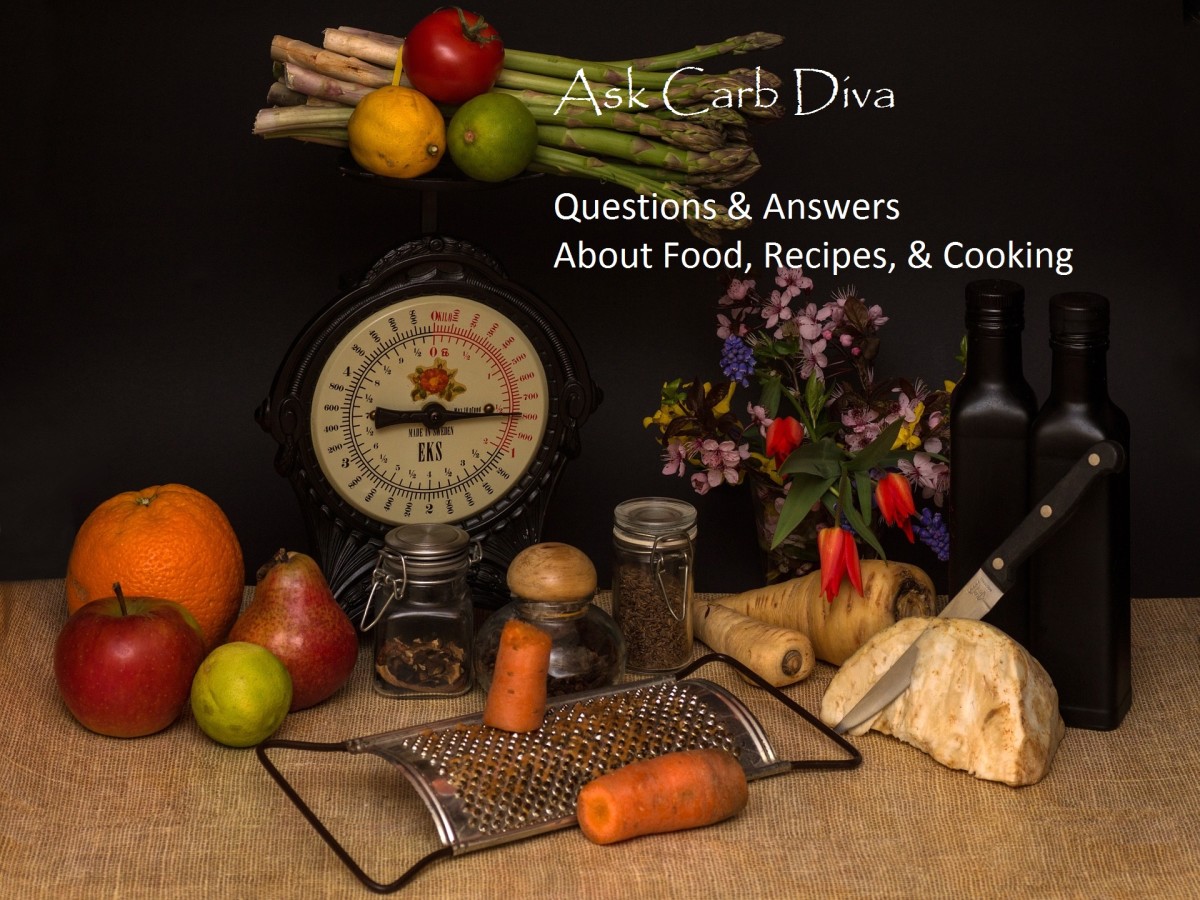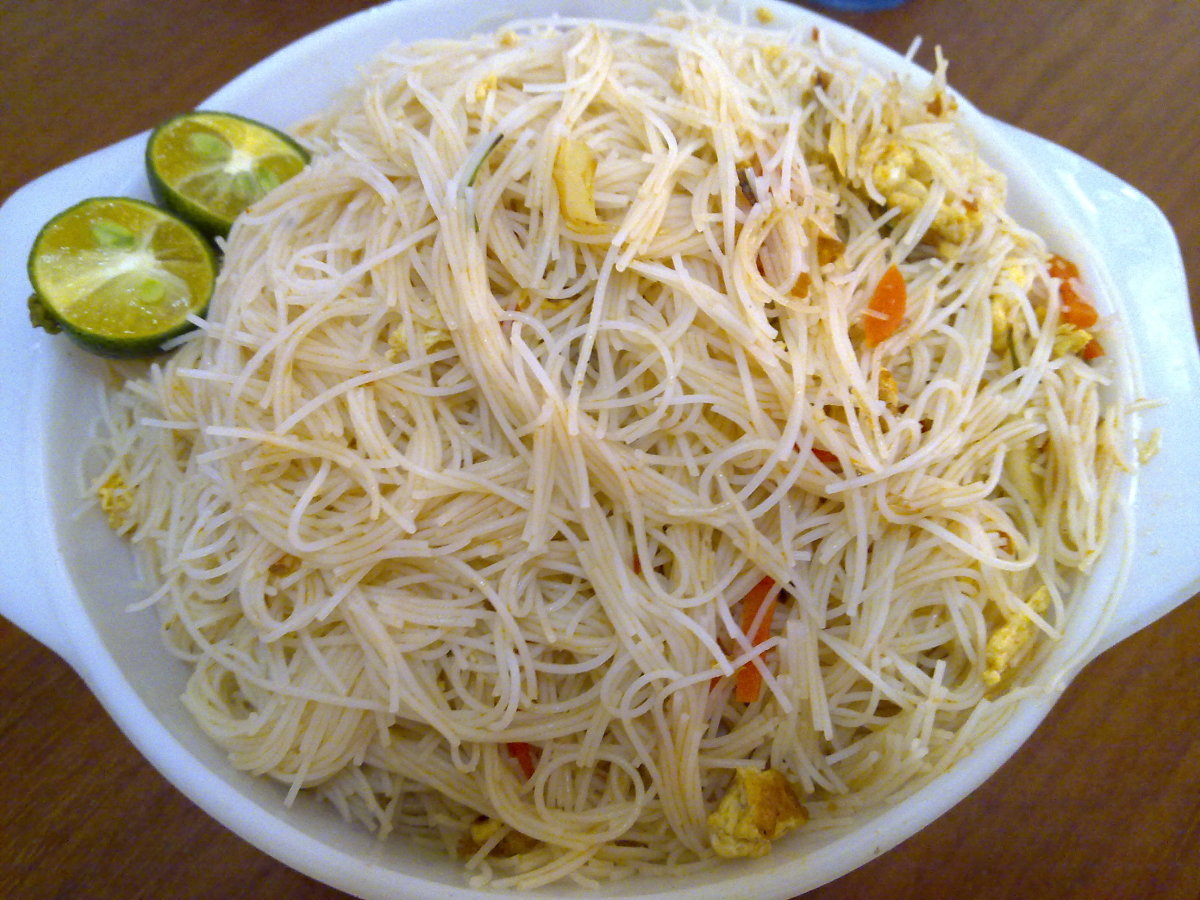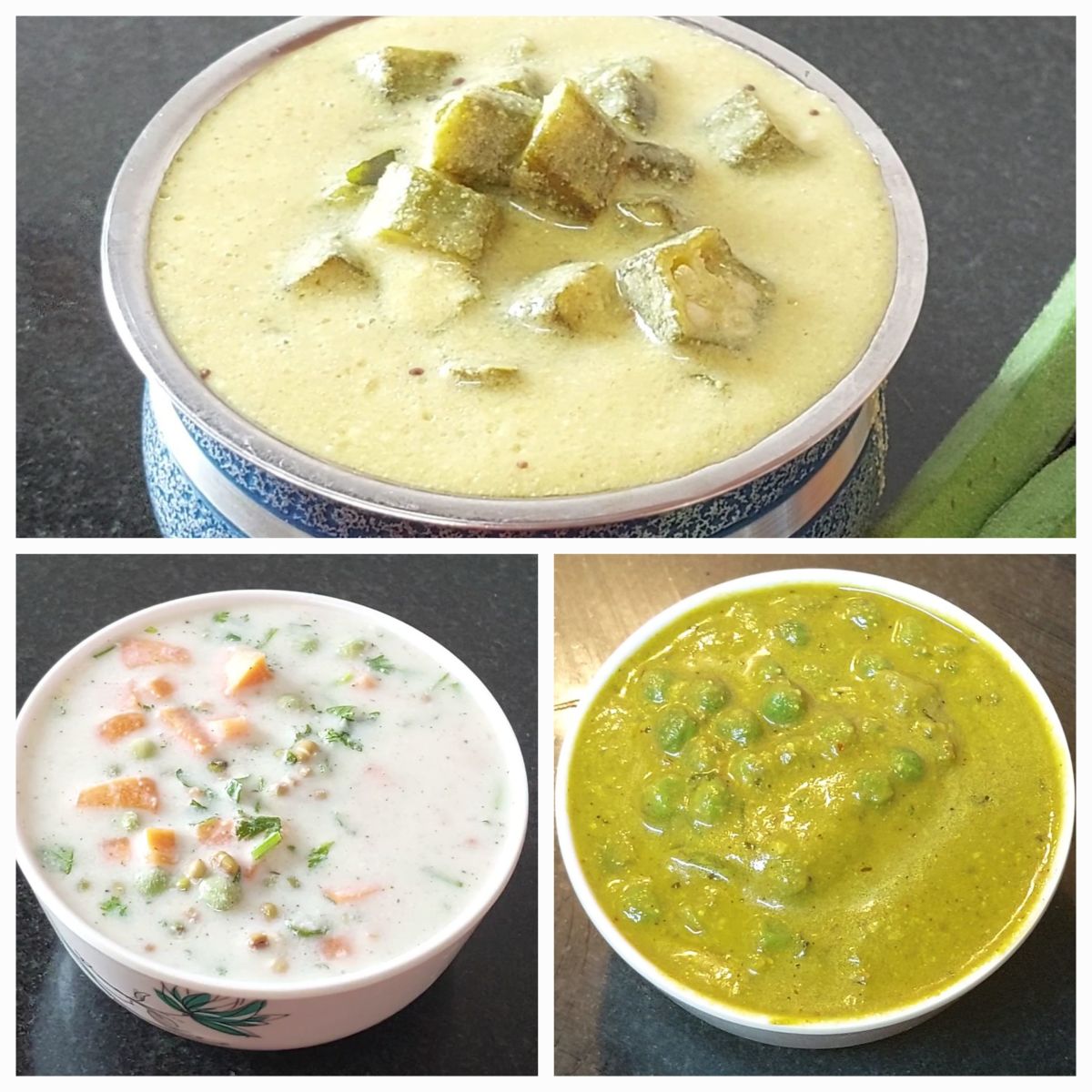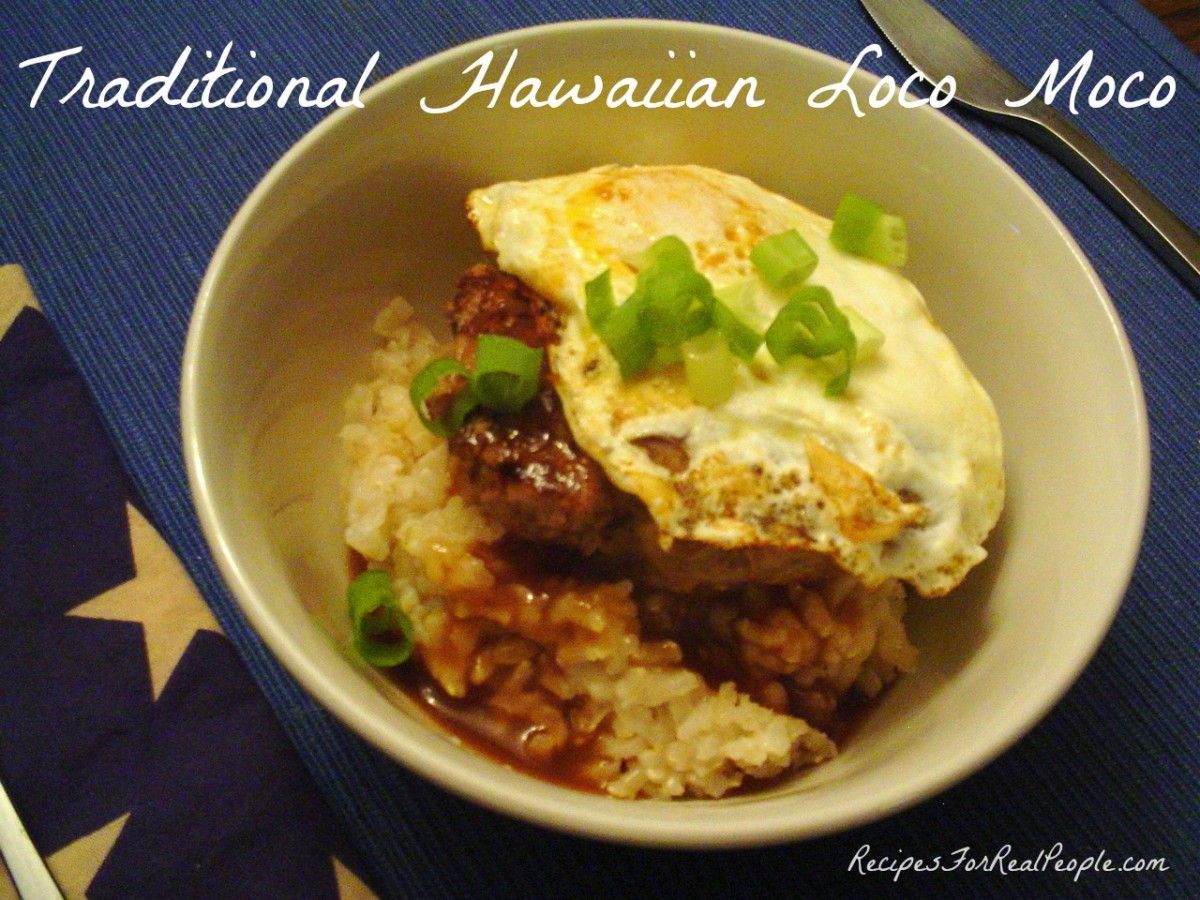Paella - A Trio of Recipes
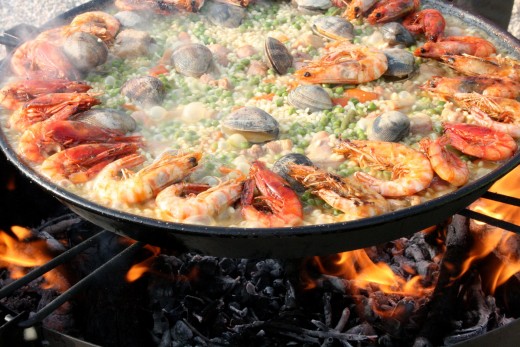
Good morning. My name is Carb Diva, and I am a lazy cook.
The Mantle of Shame
Who or what (you might ask) has brought me to this wretched state?
Two words - Scott Mobray.
Today I picked up the March 2014 issue of Cooking Light magazine. (Yes, I am a bit behind on my reading). Therein was an article by former Editor Scott Mowbray in which he described a 6-course dinner for 8--36 recipes and sub-recipes with wave upon wave of complexity.
Here is Scott's story:

After the Fear Recedes
The fear arrived about two days before we were going to serve the sort of meal that would normally come from a kitchen staffed by a squad of chefs backed by a platoon of assistants. For our six-course meal serving eight people, there would be two of us cooking in a fairly tight apartment kitchen. At our Thursday afternoon meeting, as we pored over 36 pages of recipes, what had started as a lark became deeply, wonkishly, scarily tactical.
What I wanted to know was whether this sort of complex, ultra-methodical cooking would help with my home-kitchen skills. I also wanted to dabble with some perhaps outré but still intriguing modernist techniques (a bit of gelling and spherification) and give a couple of loaned sous-vide machines a run. Oh, and I wanted to be able to sit down between courses to actually enjoy the food with our six guests, without the whole thing lasting longer than the siege of Munster.
The six-course menu involved 36 recipes and sub-recipes pulled from books by the likes of Manresa’s David Kinch and Per Se’s Thomas Keller, along with a dish from Modernist Cuisine at Home. Tossed in were a couple of dishes that I was basically making up.
In the interest of full disclosure, I would add that my cooking partner, Robin Bashinsky, who works in the Cooking Light Test Kitchen, has restaurant kitchen sous-chef experience. It was Robin who got me to see the meal as the march of a million steps, with the final work being an “easy” choreography of sautéing, reheating, and assembly. The key was to select recipes that allowed a lot of advance prep. The key also was to junk Robin’s Napoleonic plan for a Heston Blumenthal beef dish that was more complicated than instructions for assembling a Mars rover. We swapped in pork by Keller, a recipe that only contained six sub-recipes.
May I Make a Suggestion?
Dear Scott, you have humbled me down to the tips of my Sketchers.
However, no amount of pleading or intervention by family or friends will bring me to accepting this as the norm in my kitchen.
When planning food for a dinner party, I would much rather prepare one dish that has a visual “wow” factor, but is ridiculously easy to prepare.
Paella is one of those dishes.
Pie What?
Before describing paella, let's take a very brief history lesson.
Rice has been cultivated in Asia for thousands of years, but it was non-existent in Europe until the 8th century when Muslim armies invaded the Valencia region of Spain. And Romans, who had previously conquered Spain brought with them a flat cooking dish called a patella. The patella evolved to paila, and finally paella.
Thus, rice cooked in a flat-bottomed pan is paella (pah-ey-luh)
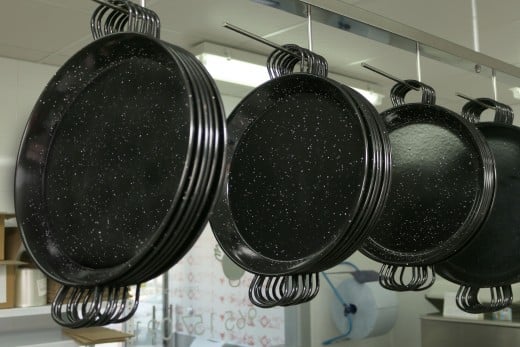
The Evolution of Paella
Today paellas contain a mix of fish and shellfish, poultry, and vegetables. But paella was originally a laborer’s meal—a dish cooked over an open fire and eaten directly from the pan. A typical meal would have been flavored with snails, butter beans, and water vole(!)
With sociological changes living standards rose in the late 19th century. Snails and voles were replaced by rabbit and chicken. (Thank Goodness!).
The most widely used, complete ingredient list of this era was as follows:
- short-grain white rice
- chicken
- rabbit
- tomatoes
- fresh rosemary
- sweet paprika
- saffron
- garlic
- salt
- olive oil
- water.
This dish became so popular that in 1840 a local Spanish newspaper first used the word paella to refer to the recipe rather than the pan in which it was cooked.
During the 20th century, paella's popularity spread past Spain's borders. As other cultures set out to make paella, the dish invariably acquired regional influences. Consequently, paella recipes went from being relatively simple to including a wide variety of seafood, meat, sausage, vegetables and many different seasonings.
A traditional, uncomplicated version of Spanish Paella is given below.
Traditional Spanish Paella
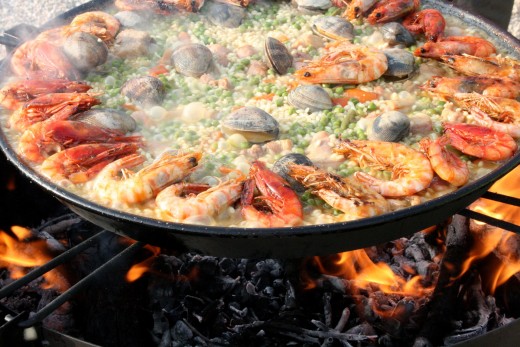
Ingredients
- 1/4 cup olive oil
- 1 to 1.5 pounds broiler-fryer chicken pieces (bone and skin intact)
- 1 medium onion, chopped
- 1 clove garlic, minced
- 3 cups water
- 1 1/2 cups uncooked long-grain white rice
- 1 14.5-oz can diced tomatoes (not drained)
- 2 tsp. salt
- 1 tablespoon paprika
- 1 tablespoon instant chicken bouillon
- 1/2 tsp ground black pepper
- 1/8 tsp. saffron (or ground turmeric)
- 1 pound raw shrimp, shelled and deveined
- 12 small-shell clams
- 1 15-oz. can artichoke hearts, drained and cut up
- 1 10-oz. pkg. frozen peas, thawed
- 1 2-oz. jar sliced pimiento, drained (optional but colorful). Sliced red bell pepper may be substituted
Instructions
- Heat oil in paella pan over medium heat. Add chicken pieces and cook until brown on all sides, about 15 minutes. (Chicken will not be thoroughly cooked at this point). Remove chicken to platter and set aside.
- Cook and stir onion in the same pan until softened (about 5 minutes). Add garlic, water, rice, tomatoes, salt, paprika, bouillon, ground pepper, and saffron or turmeric. Return chicken to pan. Heat to boiling; reduce heat to low. Cover and simmer 20 minutes. (I use a pizza pan to cover the paella pan, but heavy-duty aluminum foil will also work).
- Stir in shrimp and clams. Cover and simmer 5 minutes. Add artichoke hearts and peas; cover and heat until hot, about 5 minutes. Garnish with pimiento. (Note, discard any clams that do not open).
Several years ago, I created a version of paella that focuses on the foods for which my part of the world is known—apples, asparagus, and salmon.
Pacific Northwest Paella
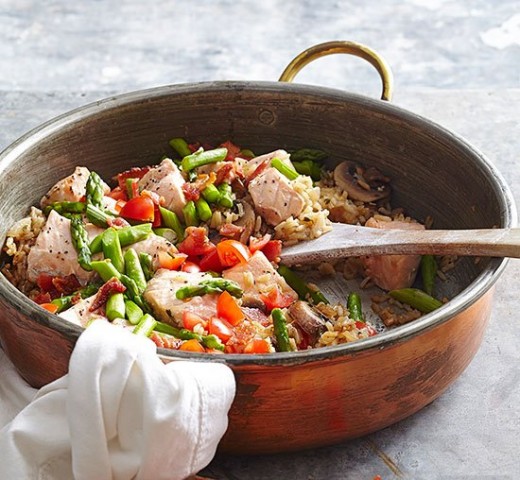
I created this (winning) recipe several years ago in response to a contest sponsored by the magazine Better Homes and Gardens. It showcases the ingredients indigenous to the Pacific Northwest--salmon, mushrooms, and fresh asparagus.
So, we have the "Spanish Traditional" and a "Pacific Northwest" version. But my family and I also love Italian food. Here are my ideas for putting a Tuscan-like spin on the dish, using fideos (pasta) in place of the rice.
Tuscan Paella
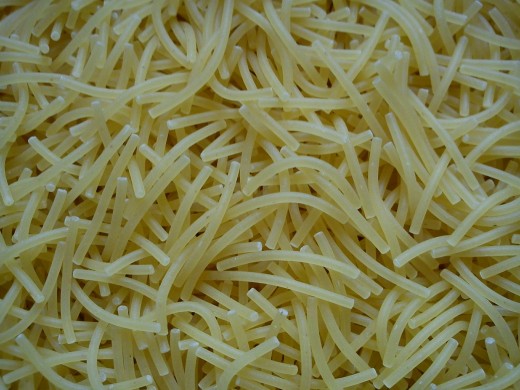
Ingredients
- 2 tablespoons olive oil
- 8 oz. thin spaghetti or angel hair pasta broken into 2-inch lengths
- 8 oz. Italian sausage (I used turkey sausage)
- 8 oz. boneless, skinless chicken thigh meat, chopped into small (1-inch) pieces
- 1 medium onion, diced
- 1/2 red bell pepper, seeded and diced
- 8 oz. button mushrooms, sliced
- 2 tsp. minced garlic
- 3 cups chicken or vegetable broth
- 1 15-oz can petite diced tomatoes
- 3 tablespoons basil pesto (store-bought or homemade)
- 1 15-oz can artichoke hearts, drained and diced
- 1 cup diced zucchini
Instructions
- Heat olive oil in a large deep skillet over medium heat. Add the broken spaghetti to the pot, and cook, stirring frequently, until toasted and golden brown, about 5-6 minutes. Remove and set aside.
- To the same pot add the Italian sausage; cook and crumble until no longer pink, about 8-10 minutes. Remove from pan and set aside.
- Cook the chicken thigh meat in the same pan, stirring occasionally until no longer pink, about 8 minutes. Remove from pan and set aside. Stir the onion, bell pepper, and mushrooms. Cook and stir about 5 minutes or until the onion is tender. Add the pasta back to the pot along with the garlic and pesto; stir in 2 cups of the broth and the diced canned tomatoes. Turn heat to high and boil, stirring occasionally, until the broth has been mostly absorbed.
- Return Italian sausage and chicken thigh meat to pan, arranging around the edge of the pan. Place artichoke hearts and zucchini in the middle of the pan. Add the remaining 1 cup of broth. Reduce heat and simmer until almost all liquid is absorbed, about 10 minutes.
© 2014 Linda Lum


